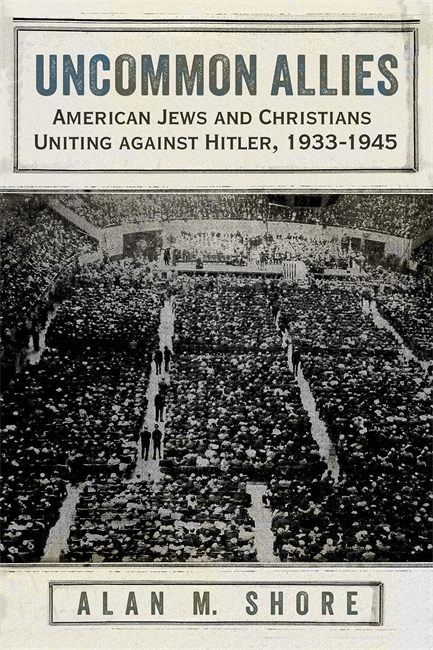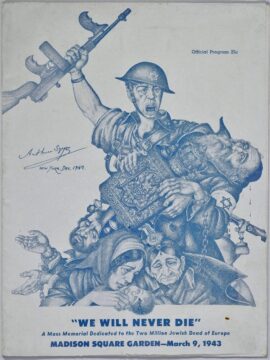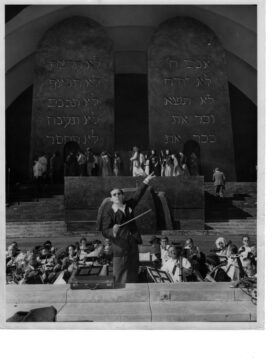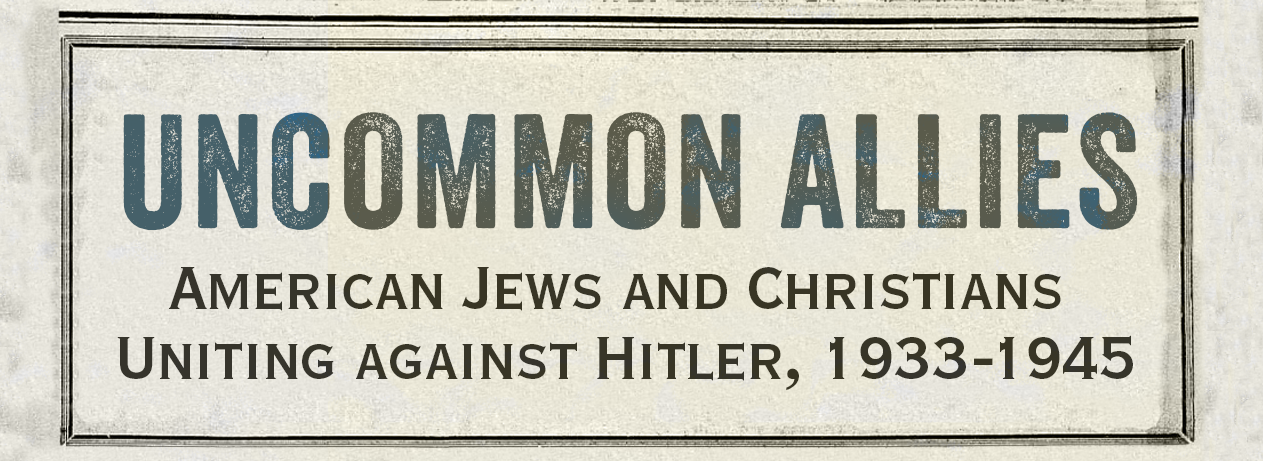Uncommon Allies: American Jews and Christians Uniting against Hitler, 1933-1945 illuminates the origins of this interfaith collaboration, demonstrating that Judeo-Christian values were present before the Holocaust. Using an impressive array of English and Yiddish newspapers to inform his work, Alan Shore paints a vivid picture of vibrant rallies at Madison Square Garden, with both Christians and Jews eager to speak out against the terror of Nazism. We sat down with Shore for a quick Q&A about the book and his research process.

What pushed you to write this book now? What do you hope to accomplish with your audience?
One of the challenges I wanted to take up was to say something that hadn’t been said before. That is, upset the conventional wisdom and back it up with cogent arguments. In this instance, I have attempted to write a history of American Jewish-Christian relations during the agonizing era I have chosen that “complicates the conversation,” as the academics like to put it.
In addition to all this, the focus and structure of this work allowed me to combine my life-long love of New York City, the American Jewish experience, and other interests including Jewish-Christian relations and the Yiddish language. Although the subject matter was often difficult, the research and writing were enormously rewarding.
What were some of the events that led to religious leaders coming together for the first of the Madison Square Garden rallies?

In the early months of 1933, at the very beginning of the Hitler regime, credible and disturbing reports began to leak out of Nazi Germany concerning a spreading pattern of depredations directed against Germany’s Jewish population. Deeply concerned, Stephen Wise, Reform Rabbi of the Free Synagogue in New York City and the Honorary president of the American Jewish Congress assembled and lead a protest rally on March 27, featuring well-known New York Politicians, clergy, and Jewish Representatives.
According the English and Yiddish press reports the next day, the 20,0000 seat arena was filled, with an additional 35 to 40,000 people who clogged the streets outside also hearing the speech over loud speakers. This was just the first rally, one of four that ran at the Garden through 1945.
What parallels or significant differences of interreligious connection do you see between the events in the book and now?
In both eras, we find a sense of anxiety at home that is exacerbated by perceived threats from abroad. Wise and the sympathetic Christians he assembled were among the first to recognize that both Jews and Christians had something at stake and the rise of Hitler provided a pretext for a closer encounter. As I have shown, this common cause, which lasted through the war years and beyond, formed the basis for a more truthful exchange of views that continues to unfold.

The greatest, most impressive difference is the dramatic change in the role of the religious voice in American civil discourse. The authority of Christian leaders was widely acknowledged then when they spoke out publicly, people listened, or at least were expected to. Now the protestant hegemony that wielded such vast influence over public morality has all but evaporated. Jews, of course, were still marginalized then, but even so, some Jewish figures were starting to become more widely influential.
Were there any primary sources that surprised you, or that you were surprised to find?
I was quite fortunate to find primary sources nested in other primary sources. For example, as I mentioned, the press coverage in both English and Yiddish language newspapers were sensational and was sometimes spread over two or three days with splashy headlines and gripping photographs. But what made it even better that the text of many of these speeches was embedded in the news coverage.
One of the biggest surprises was how quickly and adroitly some of the Jewish leadership identified and deployed Chrisian support. For example, the American Jewish Committee which had only months prior to the first rally flat out rejected cooperation with Christian sympathizers later published and distributed a pamphlet called “The Voice of Religion,” which contained articles for 27 publications by the American Christian Press that were drawn from a broader spectrum of denominational participation than had yet been represented.
How does your book fill a gap in religious scholarship?
One widely respected Jewish authority had succinctly summed up the prevailing view of the history of Jewish-Christian relations in America that there had simply not been any sustained contact between the Jewish community and congregations prior to World War II. As a result of this unfortunate consensus, instances of inter-religious exchange and cooperation occurring during the years leading up to and including the war have been widely ignored by religious and secular scholars alike.
Uncommon Allies is now available.

